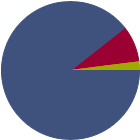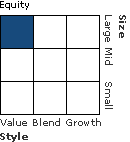| LVIP American Century Lg Co Val Svc |
|
 |
|
| Release date as of 2025-09-30. Data on page is subject to change. |
|
|
Overall Morningstar
Rating™
|
| What is this?
|
|
 |
| As of 2025-09-30 |
|
Out of 1086
Large Value Funds
|
|
|
|
|
|
| Total Fund Assets ($ Mil) |
| 157.7 |
|
|
|
| Investment Objective & Strategy |
|
| The investment seeks long-term capital growth; income is a secondary objective.
|
|
| The fund invests primarily in larger companies. Under normal market conditions, the portfolio managers will invest at least 80% of the fund's net assets in equity securities of companies comprising the Russell 1000® Index. In selecting stocks, the portfolio managers look for companies whose stock price may not adequately reflect the company's value. The managers attempt to purchase the stocks of these undervalued companies and hold each stock until the price has increased to, or is higher than, a level the managers believe more accurately reflects the fair value of the company. |
|
|
| Morningstar Category: Large Value |
|
| Large-value portfolios invest primarily in big U.S. companies that are less expensive or growing more slowly than other large-cap stocks. Stocks in the top 70% of the capitalization of the U.S. equity market are defined as large cap. Value is defined based on low valuations (low price ratios and high dividend yields) and slow growth (low growth rates for earnings, sales, book value, and cash flow).
|
|
|
| There are no additional fund specific investment risks (e.g. liquidity risk, currency risk, foreign investment risk, etc.) associated with this fund beyond the normal risks generally associated with investing in a mutual fund. |
|
|
| % of Net Assets |
 |
U.S. Stocks |
89.4 |
 |
Non-U.S. Stocks |
8.6 |
 |
Bonds |
0.0 |
 |
Cash |
2.0 |
 |
Other |
0.0 |
|
|
 |
| Data through 2025-06-30 |
|
|
|
|
| Morningstar Equity Sectors |
|
|
|
% of Stocks |
 |
Cyclical |
30.42 |
 |
Basic Materials |
3.35 |
 |
Consumer Cyclical |
2.94 |
 |
Financial Services |
20.88 |
 |
Real Estate |
3.25 |
|
|
|
 |
Sensitive |
34.14 |
 |
Communication Services |
4.70 |
 |
Energy |
6.87 |
 |
Industrials |
13.75 |
 |
Technology |
8.82 |
|
|
|
 |
Defensive |
35.44 |
 |
Consumer Defensive |
12.50 |
 |
Healthcare |
18.05 |
 |
Utilities |
4.89 |
|
| Data through 2025-06-30 |
|
|
| Total Number of Stock Holdings |
80 |
| Total Number of Bond Holdings |
0 |
| % of Net Assets in Top 10 Holdings |
25.26 |
|
|
| Turnover % |
(as of 2024-12-31) |
41.00 |
| 30 Day SEC Yield % |
1.86 |
|
|
Sector |
P/E |
% of Net
Assets
|
 |
 |
 |
 |
 |
 |
JPMorgan Chase & Co |
 |
14.74 |
3.88 |
 |
Johnson & Johnson |
 |
18.67 |
3.14 |
 |
Charles Schwab Corp |
 |
22.05 |
2.51 |
 |
Becton Dickinson & Co |
 |
34.07 |
2.51 |
 |
Norfolk Southern Corp |
 |
19.58 |
2.40 |
 |
 |
Zimmer Biomet Holdings Inc |
 |
24.86 |
2.34 |
 |
BlackRock Inc |
 |
29.89 |
2.25 |
 |
Medtronic PLC |
 |
26.39 |
2.12 |
 |
U.S. Bancorp |
 |
10.46 |
2.07 |
 |
Truist Financial Corp |
 |
11.39 |
2.04 |
 |
|
 |
|
|
|
|
|
| Loss of Money, Not FDIC Insured, Value Investing, Active Management, Issuer, Market/Market Volatility, Equity Securities, Restricted/Illiquid Securities, Derivatives, Forwards, Large Cap |
|
| Show Risk Definitions |
|
|
| Inception Date: 2004-10-29 |
|
| Brian Woglom (2016-01-08) |
|
| Brian have more than five years of experience with American Century. He was a member of the team of investment professionals managing the U.S. Value Yield, U.S. Value, U.S. Large Cap Value, U.S. Mid Cap Value and U.S. Equity Market Neutral Value strategies and related accounts, and he co-manages U.S. Large Cap Value, U.S. Value, U.S. Mid Cap Value and U.S. Equity Market Neutral Value. He joined American Century Investments in 2005. Previously, Brian was an investment analyst for Argo Partners and an analyst for the portfolio management unit of Metropolitan Life Insurance Co. He has worked in the investment industry since 1998. Brian earned a bachelor's degree in economics from Amherst College and a master’s degree in business administration from the University of Michigan. He is a CFA® charterholder and a member of the CFA Institute. |
|
| Philip Sundell (2016-12-31) |
|
| Vice President of American Century since 2022 and Portfolio Manager of American Century since 2017. He joined American Century in 1997 and became a senior analyst in 2007. He began his investment career in 1992 and has a BS from Missouri State University and an MBA from Texas Christian University. |
|
| Adam J. Krenn (2022-02-19) |
|
| Adam Krenn, CFA, is a portfolio manager and senior investment analyst for American Century Investments®.
Mr. Krenn joined the company in 2011 as an investment analyst.
Prior to that, he worked as an equity analyst at Eaton Vance Investment Managers and as an equity research associate at Fidelity Management & Research company. He has worked in the investment industry since 2004.
Mr. Krenn holds bachelor's degrees in economics and Chinese from the University of Notre Dame. |
|
|
|
| Lincoln Financial Investments Corporation |
|
|
| Lincoln Variable Insurance Product Tr |
|
|
| American Century Investment Management Inc |
|
|

© Copyright 2025 Morningstar, Inc. All rights reserved. Morningstar, the Morningstar logo, Morningstar.com, Morningstar Tools are either trademark or service marks of Morningstar, Inc. The information contained herein: (1) is proprietary to Morningstar and/or its content providers; (2) may not be copied or distributed; and (3) is not warranted to be accurate, complete or timely. Neither Morningstar nor its content providers are responsible for any damages or any losses arising from any use of information. Past performance is no guarantee of future performance. |
|
Past performance is no guarantee of future results.
Returns will vary and shares may be worth more or less than their original cost when sold.
|
|





















